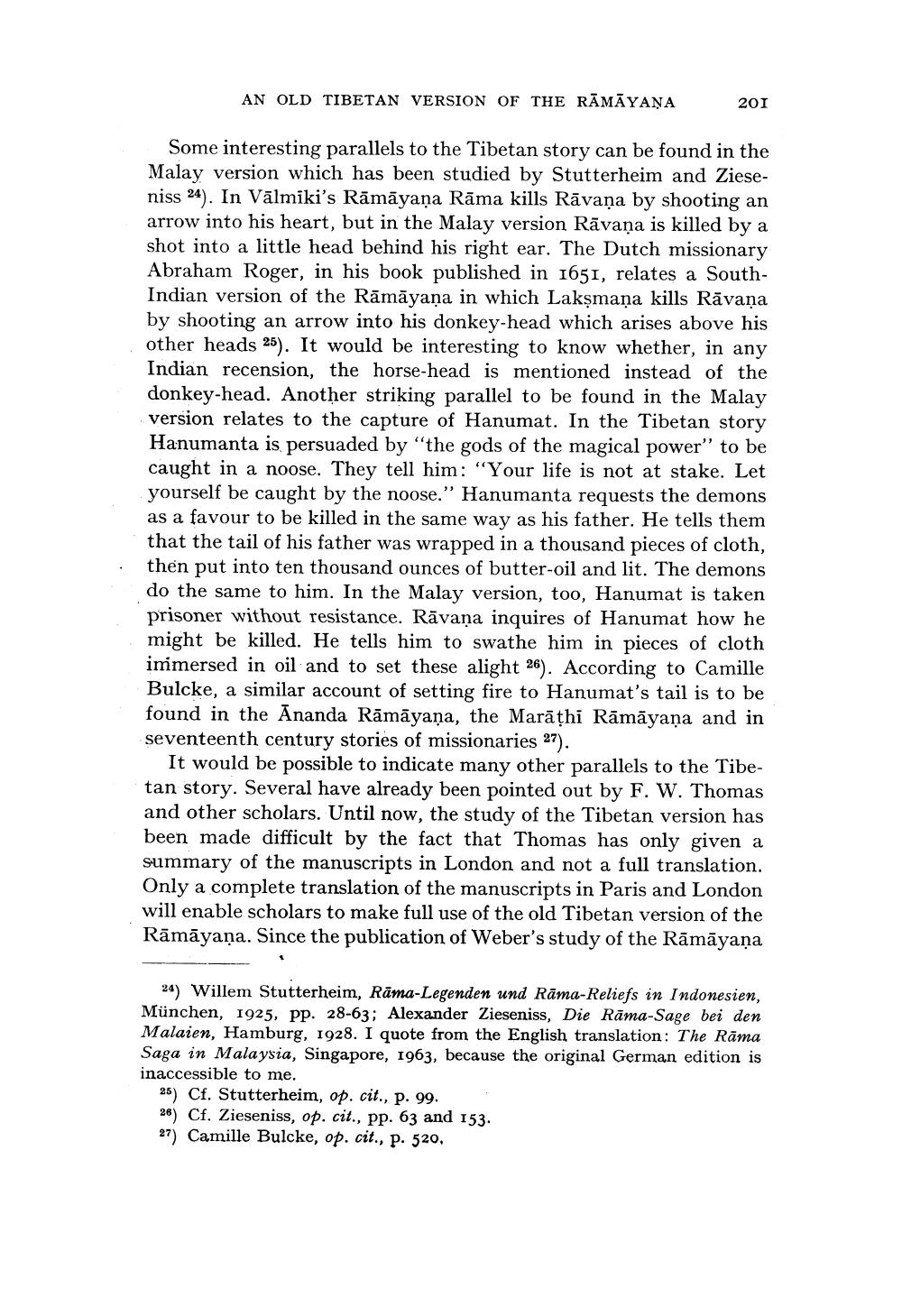________________
AN OLD TIBETAN VERSION OF THE RĀMĀYAŅA
201
Some interesting parallels to the Tibetan story can be found in the Malay version which has been studied by Stutterheim and Zieseniss 24). In Vālmiki's Rāmāyaṇa Rāma kills Rāvana by shooting an arrow into his heart, but in the Malay version Rāvana is killed by a shot into a little head behind his right ear. The Dutch missionary Abraham Roger, in his book published in 1651, relates a SouthIndian version of the Rāmāyaṇa in which Lakşmaņa kills Rāvana by shooting an arrow into his donkey-head which arises above his other heads 25). It would be interesting to know whether, in any Indian recension, the horse-head is mentioned instead of the donkey-head. Another striking parallel to be found in the Malay version relates to the capture of Hanumat. In the Tibetan story Hanumanta is persuaded by the gods of the magical power" to be caught in a noose. They tell him: "Your life is not at stake. Let yourself be caught by the noose.” Hanumanta requests the demons as a favour to be killed in the same way as his father. He tells them
that the tail of his father was wrapped in a thousand pieces of cloth, . then put into ten thousand ounces of butter-oil and lit. The demons
do the same to him. In the Malay version, too, Hanumat is taken prisoner without resistance. Rāvana inquires of Hanumat how he might be killed. He tells him to swathe him in pieces of cloth imimersed in oil and to set these alight 26). According to Camille Bulcke, a similar account of setting fire to Hanumat's tail is to be found in the Ananda Rāmāyaṇa, the Marāthi Rāmāyaṇa and in seventeenth century stories of missionaries 27).
It would be possible to indicate many other parallels to the Tibetan story. Several have already been pointed out by F. W. Thomas and other scholars. Until now, the study of the Tibetan version has been made difficult by the fact that Thomas has only given a summary of the manuscripts in London and not a full translation. Only a complete translation of the manuscripts in Paris and London will enable scholars to make full use of the old Tibetan version of the Rāmāyaṇa. Since the publication of Weber's study of the Rāmāyaṇa
24) Willem Stutterheim, Rāma-Legenden und Rāma-Reliefs in Indonesien, München, 1925, pp. 28-63; Alexander Zieseniss, Die Rāma-Sage bei den Malaien, Hamburg, 1928. I quote from the English translation: The Rāma Saga in Malaysia, Singapore, 1963, because the original German edition is inaccessible to me.
25) Cf. Stutterheim, op. cit., p. 99. 26) Cf. Zieseniss, op. cit., pp. 63 and 153. 27) Camille Bulcke, op. cit., p. 520,




